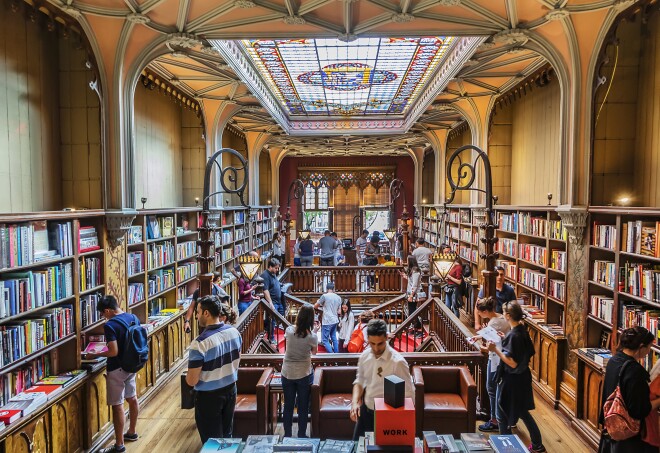Overview
When’s the best time to go to Cape Town?
Cape Town has a Mediterranean climate and is an enjoyable place to visit year-round. In the summer (November–January), be prepared for dry, hot days. Late August through September sees the arrival of bountiful, colorful flowers in the Western Cape. February may be warm, but the strong wind known as the Cape Doctor picks up and can make for rough seas and unpredictable weather on Table Mountain. March is a pleasant time to visit, when a small amount of autumn foliage is visible and days are sunny and comfortable. If sightseeing in the winter, pack your umbrella and waterproof fleece, because it’s likely you’ll see rain showers during your visit.
How to get around Cape Town
Some major airlines (KLM, Emirates, Virgin Atlantic, and South African Airways) fly direct to Cape Town from Europe, while others will require you to transfer in Johannesburg. Give yourself at least two hours for this transfer, so you’ll have time to pass through immigration, collect your bags, recheck them after customs, and then proceed to board your domestic flight to Cape Town. Cape Town International Airport is located 12 miles (20 kilometers) east of the city center. Options for transport include the MyCiTi Bus, rental cars, or metered cabs. Some cabs will negotiate a flat rate, but will run around R300 to R400 (between $21 and $28) to get there.
Though most Capetonians drive everywhere, Cape Town is an extremely walkable city. If you’re short on time, you’ll likely spend most of it in the City Bowl, the part of central Cape Town encapsulated by Table Mountain. With more time to explore, branch out and visit the variety of suburbs surrounding the city and down the Cape Peninsula. Some, such as Hout Bay, are easier accessed by car, and others, like Kalk Bay, are a scenic train ride away. Most shops, hotels, and bars are located on or near Long Street and at the V&A Waterfront. Walking is generally safe, but the city center can be very quiet on the weekends, so stick to the main roads. A bicycle is a great way to get around, and dedicated bike paths are being created. Public transport is usually safe to use during the day, especially during commuting hours. Minibus taxis can be a cramped and hair-raising experience, but they’re a cheap way to travel from the Southern Suburbs into the City Bowl. The Golden Arrow buses run along the same route. MetroRail trains run regularly and offer a choice of fare—first or third class (with no major difference in comfort). When driving a rental car, remember to drive on the left. Stoplights operate the way American lights do but are called “robots.” Park your rental car in a secure, gated area overnight (if possible), and never leave belongings or valuables visible. Car guards work in most parking areas and streets, so don’t forget to carry some small change for a tip when you return (up to R10, around 70 cents).
Can’t miss things to do in Cape Town
It’s hard not to notice the large population living in poverty in Cape Town. As visitors, there is a natural curiosity about what life is like in a city township. While it’s not recommended to visit a township your own, you can book tours with responsible providers who employ local township residents to guide small groups on insightful, interactive visits. Simon’s Town, a small port directly outside of Cape Town, was long connected to the slave trade and a tour by AFAR’s partner, Context Tours, can illuminate through the charming town’s (and South Africa’s) dark past.
Food and drink to try in Cape Town
Cape Town is, without a doubt, the culinary capital of South Africa. With such a diverse mix of cultures colliding in this city, this is not the time to go on a diet. The standard international fares are available, but be sure to try local delicacies such as juicy karoo lamb, along with South Africa’s best local wines, perhaps a rich pinot noir or fruity chenin blanc. South African dishes include bobotie (an eggy, savory curried meat dish) or potjiekos (a beef or vegetable stew cooked in a cast-iron pot over a fire). If staying with friends or relatives, you’ll likely be invited to a braai (BBQ) and have a chance to try boerwors, which are long, round sausages. For dessert, try the malva pudding (rich, sticky, and sweet) or the melk tart (creamy custard pie). Biltong, when done right, is the most savory and tender beef jerky you’ll ever have. Craft beer is surging in popularity. You might want to take home a bottle of Amarula, a sweet liquor made from the marula fruit and the essential ingredient of the Springbok shooter (shot), a must-try for first-time visitors in South Africa.
Culture in Cape Town
A multicultural melting pot, Cape Town is rich in cultural highlights, with facets ranging from politics to design to sports. First, discover how apartheid laws changed the landscape of Cape Town by visiting the District Six museum, named after the area where more than 60,000 people were forcibly removed from the city. Next, take the ferry to Robben Island and tour the facility with a former prison inmate to see where Nelson Mandela and other famous political exiles spent their days at back-breaking work in the quarry. Walk through the Bo Kaap neighborhood, filled with colorful row houses and steeped in the culture of the Cape Malay (one of many ethnic groups you’ll encounter in the city). Cheer on the Ajax Cape Town football team at the Green Point Stadium, a landmark from South Africa’s 2010 World Cup games. Similarly, take in a cricket or rugby game at the sporting venues in Newlands in the Southern Suburbs.
There is always something going on in Cape Town, though the winter months (June–September) are quieter. Family events include the South African Navy Festival in April, which allows visitors to tour South African naval ships for free in Simonstown, and the Hermanus Whale Festival in September. Two large sporting events are the Two Oceans Marathon (Easter weekend) and the Cape Argus Cycle Tour (early March). While it’s fun to attend an event like the Good Food & Wine Show (May), the real fun begins when you go to food and wine festivals in the winelands. Harvest season runs from February on and is a great excuse to explore this region for several days. Music festivals include Oppikoppi (August), Rocking the Daisies (September-October), Flamjangled Tea Party (March), and Greenpop’s ReforestFest (May), typically three-day events with live music and overnight camping. For the more advanced festivalgoer, South Africa’s very own Burning Man festival, called Afrikaburn, is held in the Karoo desert annually.
Local travel tips for Cape Town
The pace of life slows more than usual a couple of weeks before and after the Christmas holiday season. Book the Robben Island ferry way in advance to avoid disappointment. Table Mountain is cheaper in the summer, with the promotional “half-price after sunset” discount. Three wineries is enough for a day of winetasting. Any more than that, and you’re bound to feel overwhelmed (and by overwhelmed, we mean drunk).














